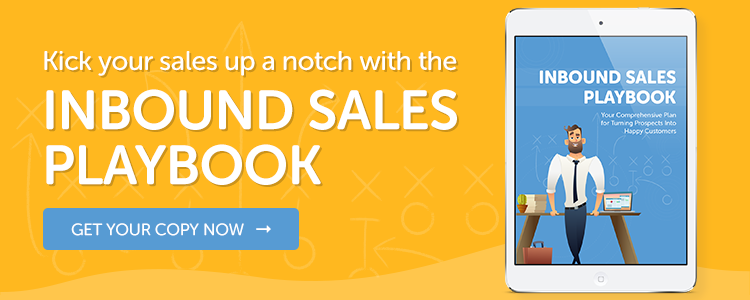Today’s digital marketers are responsible for developing content that attracts and converts leads.
On top of that big job, they often work with sales pros to ensure content is on target for closing a final agreement. One place where marketers and sales pros partner is sales enablement content.
Sales enablement content is content that smooths the path to a final sale – typically, but not always, after the lead has asked to speak to a sales expert directly. It’s some of the last content a lead will engage with during the Decision phase of the three-stage buyer journey.
Like the content your leads access online, sales enablement content should be informative and useful. However, it also needs to be sophisticated and persuasive in ways other content may not be.
Ideally, it should present your case in a way that makes truly qualified leads confident your solution is the best one for them. This, in turn, makes sales reps’ jobs much easier.
By the time inbound leads peruse sales enablement content, they already know quite a bit about what you have to offer. With that in mind, choosing the right format for your content is essential.
Let’s consider nine of the best types of sales enablement content you can create.
1. Case Studies
In the world of Decision content, case studies are truly unique. They equip your lead with juicy details that show them other organizations similar to theirs have had success with your solution.
At this point in their product selection, leads know your product might work. Case studies go a long way toward showing that it will work for them by dissecting a similar business scenario.
Ideally, you should have a library of use cases so you can tailor them to the sales situation. Each buyer persona should be covered, and so should every “use case” a buyer may be interested in.
2. Whitepapers
Whitepapers present detailed analysis, typically focused around a particular business problem.
Instead of creating a “before and after” narrative like a case study does, a whitepaper is intended to persuasively present a potential solution to a vexing problem that your lead is facing. It does this by delving deep into research and hard data, exploring the facts, and taking a position.
If you need to argue for a certain methodology, technique, or approach to an issue, whitepapers are where you do it. Whitepapers also function as powerful thought leadership content. The more objective research you can point to for your assertions, the more compelling your paper will be.
3. Competitor Analysis
“Nine out of 10 dentists” may recommend a product, but most B2B decision-makers need more.
Luckily, many B2B firms are in the position of being able to make objective, “apples to apples” comparisons of their products and services versus the other guys.
When this is possible – and carried out in an impeccable way, without any oversights or corner-cutting – it can produce a piece of sales enablement content even your rivals can’t argue with.
That said, there are often thorny legalities around this kind of comparison.
If you’re going to delve into the deep end, be sure your legal team is in the loop. They’ll be able to make any text fixes necessary to keep your competitor analysis on the up and up.
4. One-Pagers
A one-pager is a piece of sales enablement content used in technology-focused industries. It provides subject matter experts (SMEs), such as engineers, with all the information they need to know about a solution’s internal components or features. It’s also known as a spec sheet.
Generally, the most sophisticated techies in an enterprise aren’t the one who make day-to-day purchase decisions. However, they often have influence and may be the only ones truly qualified to determine if a technical solution works.
Make sure your one-pagers speak to questions these “powers behind the throne” are interested in.
5. Ebooks and Blog Posts
Blogs and ebooks can be used all throughout the three-stage buyer journey. As that journey comes to an end, though, the lines begin to blur. Long form text content that discusses solution implementation around business problem can be used as Consideration or Decision content.
Remember, the key to any good text content is to ensure it meets the readers where they are. The more content they’ve absorbed in the past, the more they’ll know about a particular topic. The more they know, the deeper you can go – until, at last, you can address their specific challenge.
6. Social Media Messages
Social media posts can be sales enablement content when they engage a lead and move that person toward action.
In general, this won’t be the kind of content you broadcast to followers’ feeds, but direct contact through the platform’s messaging feature. Personalized, well-informed DMs show you’re paying attention to a lead’s needs. They can be especially potent on LinkedIn.
7. Product Demonstrations
For SaaS software providers, a product demonstration is worth a thousand words.
While product demo videos can be effective, the best product demo is interactive. In today’s market, decision-makers will often want to see the hands-on results of a product before they are interested in committing. That’s especially true when implementation may take a long time.
Product demonstrations can be self-paced or guided. They can be on-site or use teleconference solutions. Whatever you choose, one rule holds firm: Make it as easy as possible to access the demo. If you don’t expect anything from your lead, your tech team will never be disappointed!
8. Videos

More and more, videos are taking a central place as sales enablement content. B2B buyers love video because it’s fast and convenient. A video can communicate a lot in a very short time – and it’s ideal for commutes and other “downtime” when executives do research from a smartphone.
Developing a style of video that speaks to your leads takes more than one rodeo.
Just remember: No matter how complex the subject matter, keeping your videos short makes it more likely they will be viewed in full. Also ensure each video has a clear CTA based on its place in the funnel.
9. Sales Scripts
“Sales scripts” in the traditional sense can stifle your ability to build rapport. In inbound sales and marketing, we don’t recommend them. Still, it’s vital that marketers respond to objections that leads and customers have raised in the past.
By understanding and researching objections, marketers can generate sales training content that allows reps to prepare for common misconceptions. Some of these may take the form of “scripts” where sales teams familiarize themselves with the broad outlines of an effective response.
Inbound Marketing Makes Sales Enablement Easier Than Ever
Sales enablement is another area where inbound is bringing sales and marketing together.
It wasn’t that long ago when many firms were treating their sales and marketing teams as bitter rivals. Sales enablement content was typically developed by the sales organization or not at all.
With inbound sales and marketing, the truth has never been clearer: When sales and marketing teams understand and support each other, both sides achieve much better results.
Get the teams together and get started on stellar sales enablement content today.




Rob Steffens
I am the Director of Marketing here at Bluleadz. I'm a huge baseball fan (Go Yankees!). I love spending time with friends and getting some exercise on the Racquetball court.